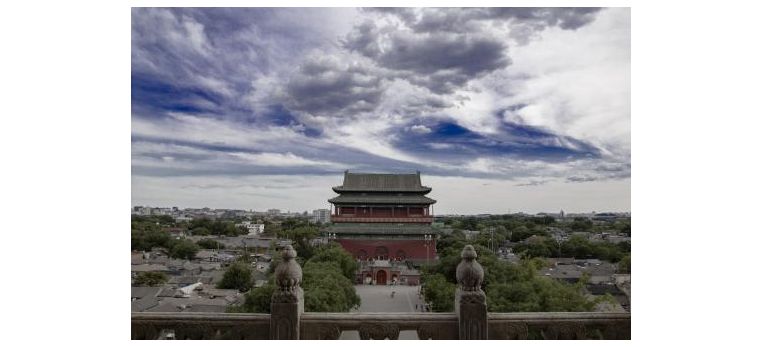
The Beijing Drum Tower (Gulou) stands just south of its sibling, the Bell Tower (Zhonglou), in the Beijing district that bears its name. First built in the 13th century, the striking red structure has been rebuilt several times. It originally held 25 drums that kept time for the city, and today it hosts regular drumming performances.
The Basics
Many Beijing cultural tours include a stop at the Drum Tower and the Bell Tower, as the structures are Beijing icons. Drum Tower tours often include a rickshaw ride through the nearby hutong alleyways and a live drum performance. You can visit independently easily enough, buying either a single ticket to the Drum Tower or a combination ticket that includes the Bell Tower for a moderate fee. At 154 feet (47 meters) high, the Drum Tower is slightly smaller than its sibling, but still offers sweeping views over the nearby hutong and across to Jingshan Park.
Things to Know Before You Go
The Drum Tower is a must for history buffs. Plan to visit both the Drum Tower and the Bell Tower. They’re just 299 feet (91 meters) apart. Wear flat, comfortable shoes for climbing the tower. The steps are steep. If you want a photo of the Drum Tower, climb the Bell Tower for the best view. The square around the tower is wheelchair-accessible, but the tower itself is not.
Telling Time in Ancient China
Chinese officials had many ways of telling the time to ensure the city’s drums were accurate. Incense clocks measured time by burning incense, which was often elaborately shaped. It was even possible to set an alarm by, for example, fixing a bell to a smouldering incense stick so it would fall when the incense burned through. Water clocks, which measured time by the dripping of water, were first used around 5,000 years ago.